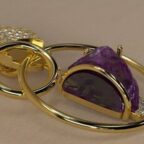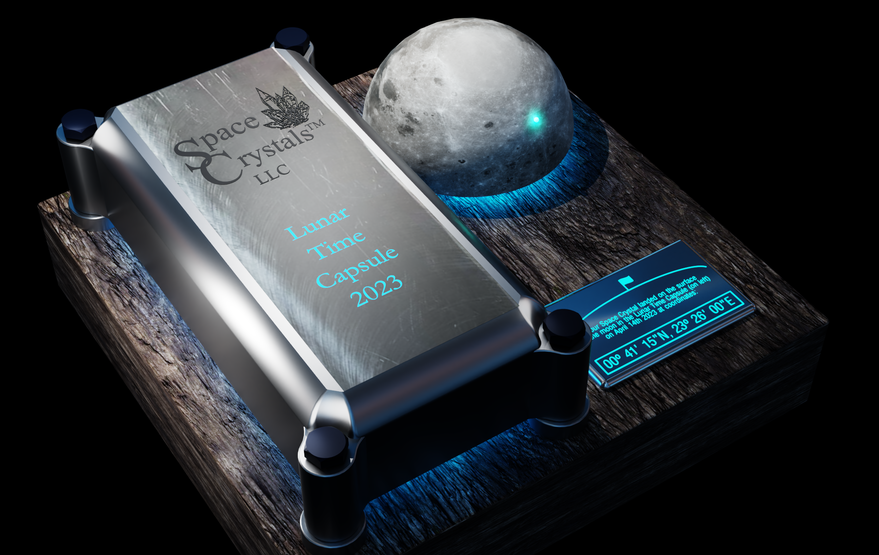SAN FRANCISCO – Looking for immortality? Space Crystals LLC might have the answer.
The startup, founded in 2021 by Waypoint 2 Space CEO Kevin Heath, plans to send crystals grown in microgravity and infused with customer DNA to the moon next year.
“We’ve got the technology,” Heath told SpaceNews. “We are in the midst of submitting a patent for the process. We proved we can get crystal growth in space.”
Space Crystals unveiled its website Oct. 24 where customers can sign up for the $150,000 service by paying a $5,000 deposit.
The $150,000 fee covers one DNA kit, DNA processing into a crystalline solution, flight to ISS to grow two crystals, return of one crystal to the customer for safekeeping and transportation of the matching crystal to the moon. (Space Crystals extracts DNA from a strand of a customer’s hair.)
But wait, there’s more. Each customer who sends a crystal to the moon receives a commemorative plaque showing the geographic coordinates of the Space Crystal’s Lunar Time Capsule, which remains attached to the lunar lander.

Customers also send one gigabyte of personal data with the lunar mission.
“Whether that’s TickTock videos, books they’ve written, whatever,” Heath said. “They get to tell their own story to whoever ends up finding this.”
Space Crystals combines ideas popular in science and entertainment. The “Jurassic Park” film series began with the premise that scientists could clone dinosaurs by extracting DNA preserved in amber. In real life, University of Arizona scientists propose storing samples of Earth’s 6.7 million species in lunar lava tubes, part of a Noah’s Ark-inspired way of capturing the planet’s biodiversity.
Space Crystals sent 36 samples to the International Space Station earlier this year to figure out the how to grow DNA-infused crystals in orbit. Part of the challenge was insuring the crystals didn’t form on the ground prior to launch.
Heath can’t yet name Space Crystals’ contractors, launch providers or implementation partners due to nondisclosure agreements.
For now, Space Crystals is focused on attracting customers.
“Our target is to fly 260 customers,” Heath said. “The maximum we can possibly fly in the Lunar Time Capsule is 522.”
It’s unclear whether DNA stored in synthetic crystals could be extracted someday.
“We’ll see in 5,000 to 10,000 years when these things finally get opened by us or aliens,” Heath said. “Did it work?”
In the meantime, customers can display their Space Crystals on the ground.
In contrast to the control group of DNA-infused crystals grown in terrestrial laboratories, each crystal grown on ISS is unique. Without gravity, crystals grow in all directions and air bubbles remain trapped rather than rising to the surface as they would on Earth.
Houston-based Space Crystals worked with a local jeweler to mount some of the crystals it has returned to Earth on necklaces.
